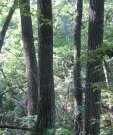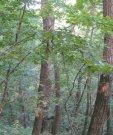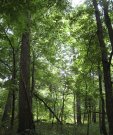Major Land Resource Area 109X
Iowa and Missouri Heavy Till Plain
Accessed: 12/21/2025
Next steps
-
1
Select an ecological site
Select an ecological site using the list, keys, photos, briefcase, or quick search option located on this page. -
2
Explore the ecological site description
Next, learn more about the selected ecological site and its characteristic dynamics by browsing the ecological site description and exploring alternative state and transition model formats.
Ecological site list
-
i
Key Characteristics
- Upland Summits, Shoulders, or Backslopes
- Bedrock > 20", or soft shale bedrock
- Loess >24" (dominantly loess)
- Alfisol
-
i
Key Characteristics
- Upland Drainageways
- Moderately Well, Well Drained
- Not Mollic
-
i
Key Characteristics
- Upland Summits, Shoulders, or Backslopes
- Bedrock > 20", or soft shale bedrock
- Little or no loess
- <15% slope
- Till
- Alfisol
-
i
Key Characteristics
- Upland Summits, Shoulders, or Backslopes
- Bedrock > 20", or soft shale bedrock
- Little or no loess
- >14% slope
- Till
- Alfic
- North, East aspects
-
i
Key Characteristics
- Upland Summits, Shoulders, or Backslopes
- Bedrock > 20", or soft shale bedrock
- Little or no loess
- <15% slope
- Interbedded shale, sandstone, siltstone, limestone residuum
- Alfisol
-
i
Key Characteristics
- Upland Summits, Shoulders, or Backslopes
- Bedrock > 20", or soft shale bedrock
- Little or no loess
- >14% slope
- Interbedded shale, sandstone, siltstone, limestone residuum
- Alfic
- North, East aspects
-
i
Key Characteristics
- Upland Summits, Shoulders, or Backslopes
- Bedrock > 20", or soft shale bedrock
- Little or no loess
- >14% slope
- Limestone residuum; loamy surface
-
i
Key Characteristics
- Footslopes, High Loess-Covered Terraces
- Alfic
- High Loess-covered Stream/Outwash Terraces
-
i
Key Characteristics
- Upland Summits, Shoulders, or Backslopes
- Bedrock > 20", or soft shale bedrock
- Little or no loess
- >14% slope
- Till
- Alfic
- South, West aspects
-
i
Key Characteristics
- Upland Summits, Shoulders, or Backslopes
- Bedrock > 20", or soft shale bedrock
- Little or no loess
- >14% slope
- Interbedded shale, sandstone, siltstone, limestone residuum
- Alfic
- South, West aspects
-
i
Key Characteristics
- Floodplains
- Not Ponded
- Adjacent to current/former channel
-
i
Key Characteristics
- Floodplains
- Not Ponded
- Adjacent to Riverfront Forest (Somewhat Poorly, Poorly Drained)
-
i
Key Characteristics
- Upland Summits, Shoulders, or Backslopes
- Bedrock > 20", or soft shale bedrock
- Loess >24" (dominantly loess)
- Mollisol/Mollic subgroup
- Claypan
-
i
Key Characteristics
- Upland Summits, Shoulders, or Backslopes
- Bedrock > 20", or soft shale bedrock
- Loess >24" (dominantly loess)
- Mollisol/Mollic subgroup
- No root restriction
-
i
Key Characteristics
- Floodplains
- Not Ponded
- Not adjacent to current/former channel
- Farthest from channel
- Moderately Well Drained; loamy
-
i
Key Characteristics
- Upland Summits, Shoulders, or Backslopes
- Bedrock > 20", or soft shale bedrock
- Little or no loess
- <15% slope
- Till
- Mollisol
-
i
Key Characteristics
- Upland Summits, Shoulders, or Backslopes
- Bedrock > 20", or soft shale bedrock
- Little or no loess
- >14% slope
- Till
- Mollic or Mollic intergrade
-
i
Key Characteristics
- Upland Summits, Shoulders, or Backslopes
- Bedrock > 20", or soft shale bedrock
- Little or no loess
- <15% slope
- Interbedded shale, sandstone, siltstone, limestone residuum
- Mollisol/Mollic subgroup
-
i
Key Characteristics
- Upland Summits, Shoulders, or Backslopes
- Bedrock > 20", or soft shale bedrock
- Little or no loess
- >14% slope
- Interbedded shale, sandstone, siltstone, limestone residuum
- Mollisol/Mollic subgroup
-
i
Key Characteristics
- Footslopes, High Loess-Covered Terraces
- Mollic
- Moderately Well, Well Drained
-
i
Key Characteristics
- Upland Summits, Shoulders, or Backslopes
- Bedrock < 20" to Limestone
-
i
Key Characteristics
- Upland Drainageways
- Moderately Well, Well Drained
- Mollic
-
i
Key Characteristics
- Upland Drainageways
- Somewhat Poorly, Poorly Drained
-
i
Key Characteristics
- Floodplains
- Not Ponded
- Not adjacent to current/former channel
- Farthest from channel
- WET FLOODPLAIN PRAIRIE Somewhat Poorly, Poorly Drained; clayey
-
i
Key Characteristics
- Floodplains
- Ponded
-
i
Key Characteristics
- Low Stream Terraces & Floodplain Steps (stepped up from active floodplain; variable flooding)
- Moderately Well, Well Drained
-
i
Key Characteristics
- Footslopes, High Loess-Covered Terraces
- Mollic
- Somewhat Poorly, Poorly Drained
-
i
Key Characteristics
- Low Stream Terraces & Floodplain Steps (stepped up from active floodplain; variable flooding)
- Somewhat Poorly, Poorly, Drained
-
i
Key Characteristics
- Upland Summits, Shoulders, or Backslopes
- Bedrock > 20", or soft shale bedrock
- Little or no loess
- <15% slope
- Till
- Mollic subgroup
Ecological site map
Basemap
Find me
Find point
Full screen
Zoom in to display soil survey map units for an area of interest, and zoom out to display MLRAs. Select a map unit polygon to view ecological sites correlated to that map unit. View a brief description of an ecological site by clicking on its name in the map popup. Soil survey correlations may not be accurate, and ecological site classification of a location should always be verified in the field. Each selection may require the transfer of several hundred KB of data.
Ecological site keys
Ecological site photos
Print Options
Sections
Font
Other
Briefcase
Add ecological sites and Major Land Resource Areas to your briefcase by clicking on the briefcase (![]() ) icon wherever it occurs. Drag and drop items to reorder. Cookies are used to store briefcase items between browsing sessions. Because of this, the number of items that can be added to your briefcase is limited, and briefcase items added on one device and browser cannot be accessed from another device or browser. Users who do not wish to place cookies on their devices should not use the briefcase tool. Briefcase cookies serve no other purpose than described here and are deleted whenever browsing history is cleared.
) icon wherever it occurs. Drag and drop items to reorder. Cookies are used to store briefcase items between browsing sessions. Because of this, the number of items that can be added to your briefcase is limited, and briefcase items added on one device and browser cannot be accessed from another device or browser. Users who do not wish to place cookies on their devices should not use the briefcase tool. Briefcase cookies serve no other purpose than described here and are deleted whenever browsing history is cleared.
Ecological sites
Major Land Resource Areas
The Ecosystem Dynamics Interpretive Tool is an information system framework developed by the USDA-ARS Jornada Experimental Range, USDA Natural Resources Conservation Service, and New Mexico State University.











